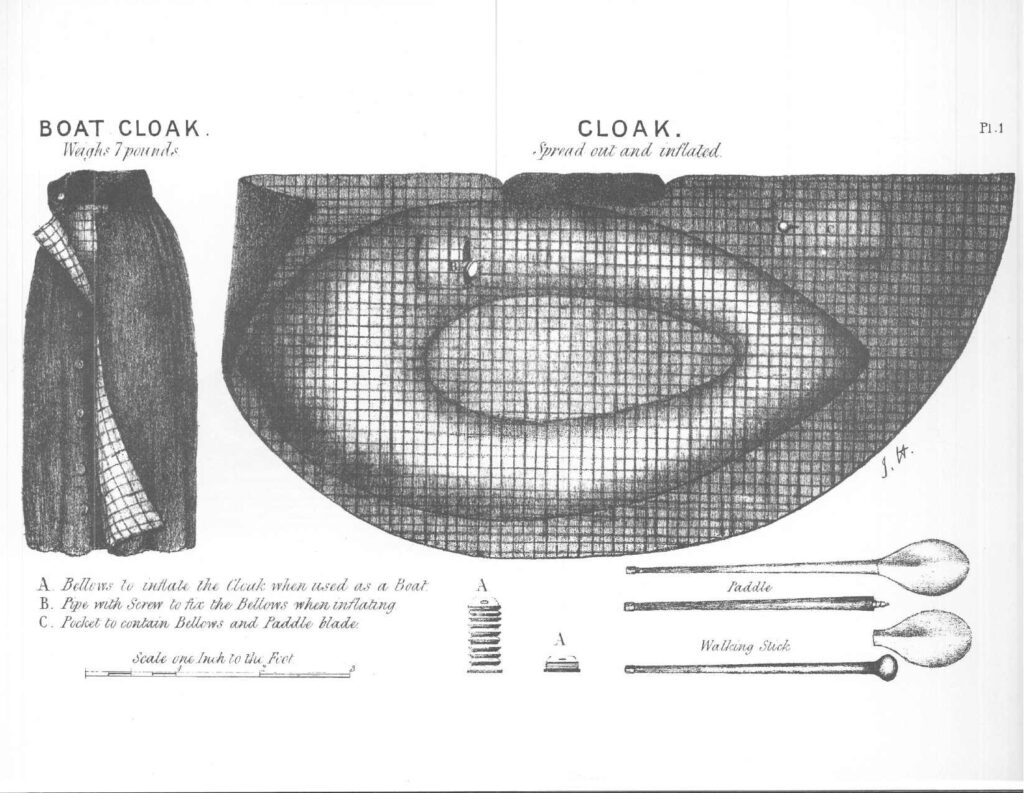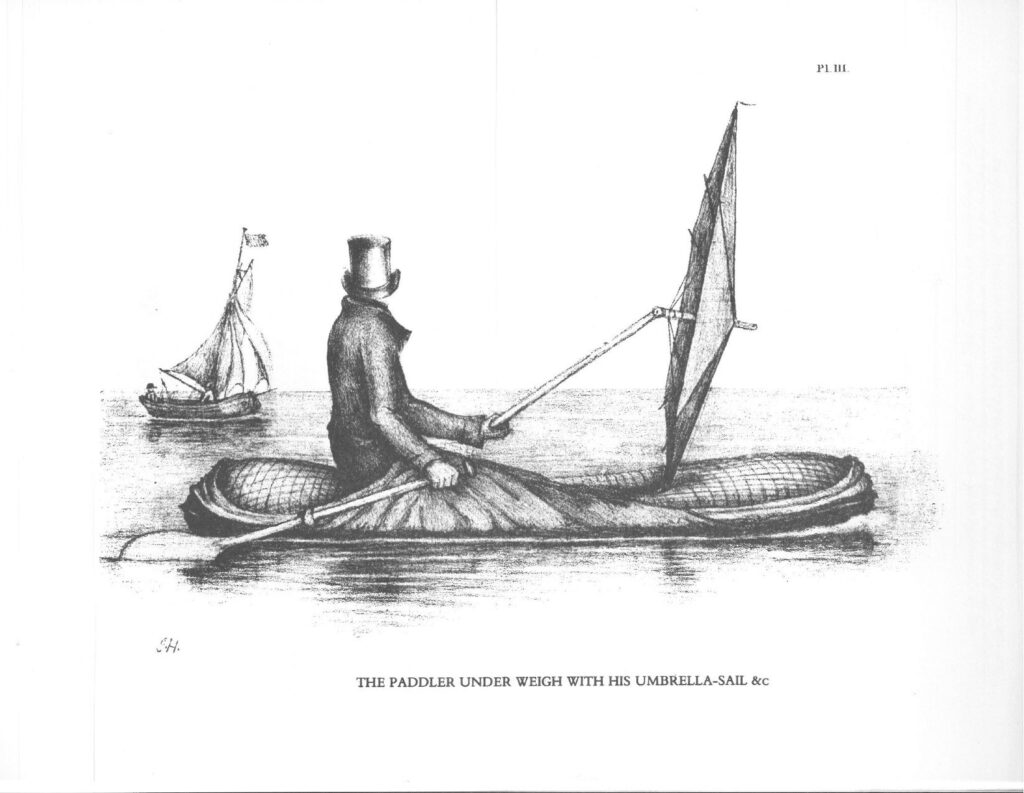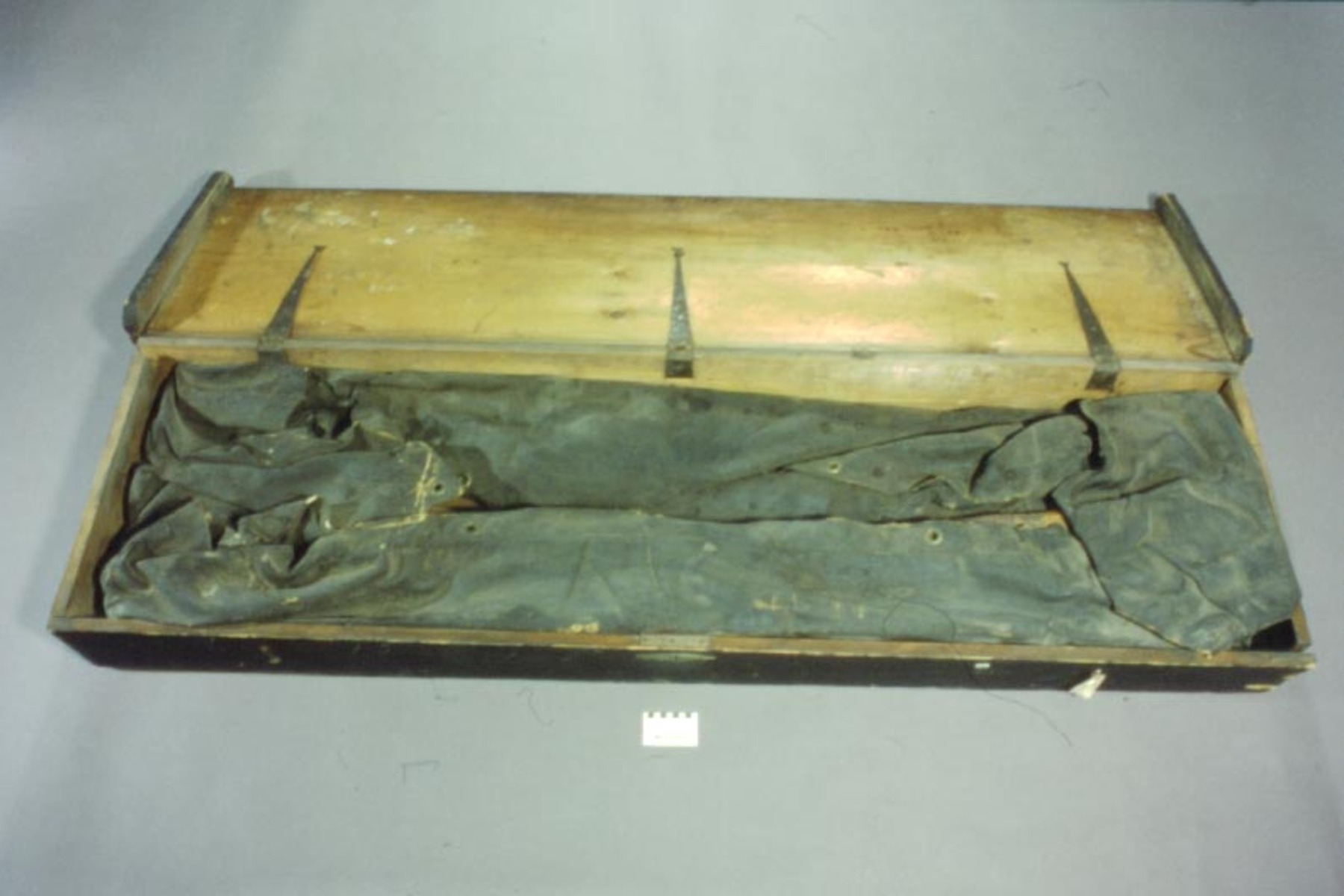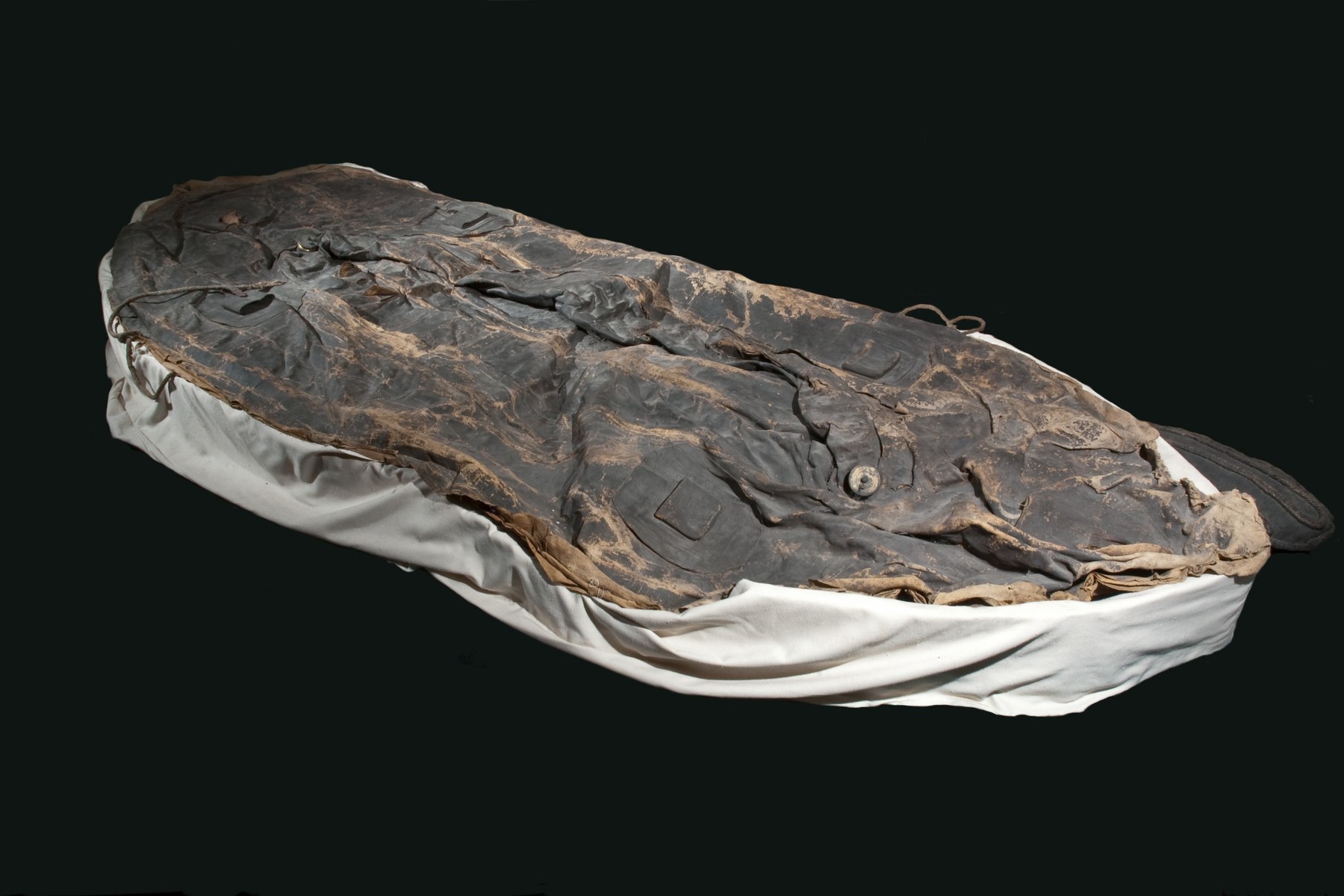Every year at this time we move into high gear developing a new temporary exhibit for our McLean-Matthews Gallery. This year’s show is playfully called “Canoes to Go: The Search for a Truly Portable Boat”.Foldable, collapsible, sectional or inflatable: these are some of the principals used in making a full-sized canoe or kayak small enough to fit into a baggage compartment or a bushplane or a backpack. While researching for this exhibit, we’ve encountered all sorts of fascinating and unexpected characters and events. I’m intending to share one or two more stories over the coming weeks and certainly hope that you are able to join us for the exhibit’s opening on the night of our Annual General Meeting, April 25th, 2012 or thereafter.

Several years ago our general manager John Summers acquired a reprint for a 1840s manuscript that described in illustrated detail the invention of an extraordinary, if ridiculous, waterproof raincoat. This marvelous garment could be removed from the shoulders of an adventurous spirit and inflated by bellows conveniently located in one pocket. This quickly transformed it into a vessel ready to carry him away. How to propel you ask? Imagine then, our intrepid explorer removing from his cloak’s other pocket the blade of a paddle that could be threaded onto the tip of his walking stick. If lucky and the wind was right, a modified Englishman’s umbrella could also be used as a sail and the once-thwarted adventurer could continue in his adventuresome way.

It turns out that this rubberized-canvas device is steeped in Arctic exploration history. Royal Navy Lt. Peter Halkett eventually developed several sizes of this device but with only limited success, having been inspired by the monumental difficulties that had faced Sir John Franklin in his overland expedition while attempting to map the Northwest Passage from shore in 1819-22. Halkett’s portable boats be acquired by Sir George Simpson (HBC Governor-in-Chief of Rupert’s Land), Dr. John Rae (who found clues to the lost Franklin expedition) and others whose names are forever connected to Arctic exploration.


There are at least two surviving Halkett devices today, each with a rich history. Jamie Morton, Curator with the HBC Museum Collection at the Manitoba Museum, has been most helpful in sharing with me photographs and information on one from their collection, still in its wooden carrying case and labeled with Simpson’s name. His records suggest that their boat, likley intended for the doomed Franklin expedition, was instead offered to Simpson as a gift before Franklin set off. In Scotland’s Orkney Islands, the Stromness Museum’s Curator Janette Park informed me that their Halkett boat has been traced to Dr. John Rae and bears his own name as well as that of one of the ship’s commanders under Franklin. She has also supplied exquisite photos of their two-man version for our use.
Apparently, Halkett had also hoped to develop a lifeboat version capable of carrying 40 people but his dream wouldn’t last. One of our dreams here at The Canadian Canoe Museum is to make a working version of the original Halkett Boat-Cloak for hands-on programming with this exhibit. Perhaps like Halkett, we’ll even take it out for sea-trials when the ice melts!






